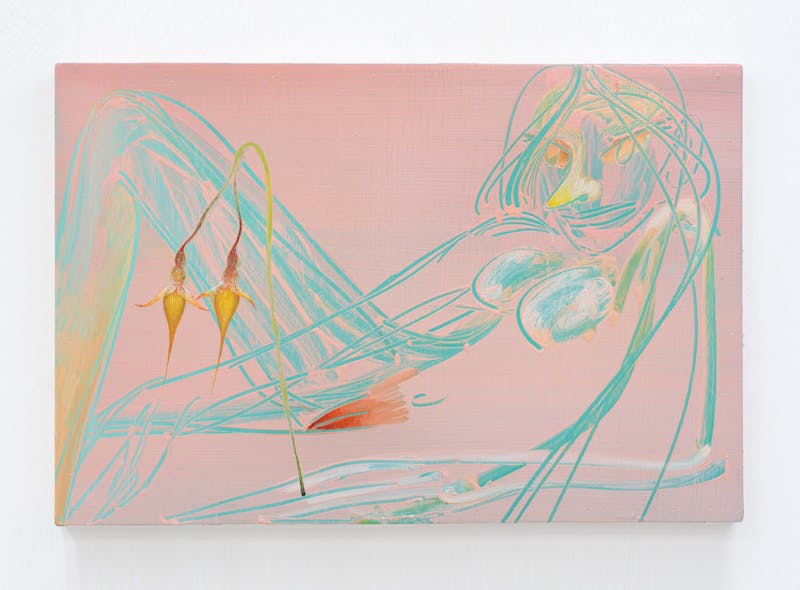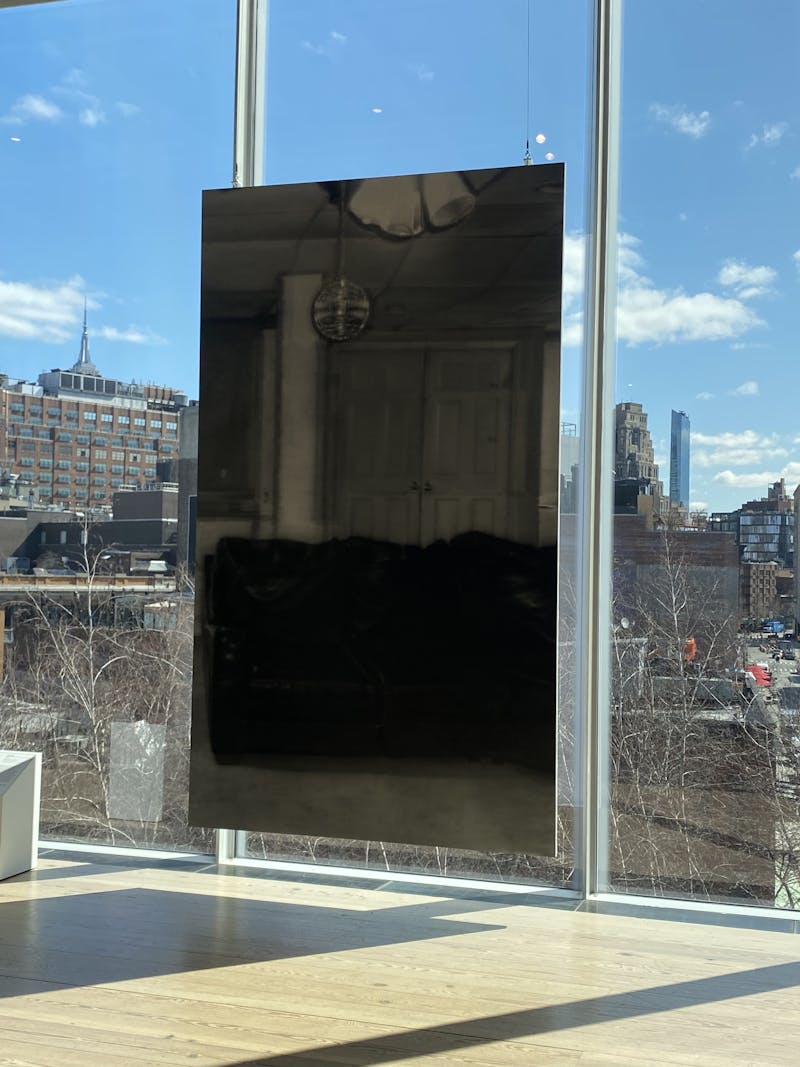Gal’s father regularly sends snaps of newly blooming flowers from his garden, or from the streets of Tel Aviv, reminding her of the vivid nature back home. She resides in London, and the incongruousness of her two lives trickle through her recent oil paintings, which all feature plants she’s stumbled across in England, or in Israel, each composed against solitary figures emerging from coloured panoramas.
They are stridently posing women, all plucked from her imagination. In previous paintings her subjects are depicted daydreaming or contemplative, but here each meets the viewer with piercing eyes, demanding us to look back. Gal is drawn to presenting curious characteristics as she is for handling varying viscosities of paint – revelling when details are more ambiguous. She describes the women as ‘amorphous’, undefined in both their posture or expression, which Gal will often ruminate on by looking at Edvard Munch’s painting of a mermaid in repose, the flittering strokes similar to the ones she’ll concoct with brushes. While painting, Gal makes brimming digital folders of paintings and film stills she’s accrued online, describing the practice as a process of ‘lingering’ with visual references before paint directs her elsewhere. For Mud Garden some of these influences creep in: you’ll notice the soft, blotchy details in the plants chime with Georgia O’Keefe’s synonymous depictions of flowers, or the confident akimbo poses draw similarities to Otto Mueller’s paintings of women wading through shallow water.

Gal Schindler, Floating knives, 2021
Painting is a boundless maze. Rarely does Gal have a precise method for where the paint will fall before starting. She prefers a more evanescent process of frenzied spurts: applying thick layers of oils which she’ll remove and scrape at over long stints in the studio. Similar to faint bursts of refracted light through stained glass, windows of colour illuminate from behind the scenes – each veil of paint applied yielding glowing outlines onto the foreground. Anne Truitt would apply layers of paint under her sculptures that viewers might struggle to notice, but which in her words would ‘authenticate the colour on top’. Gal describes painting as ‘a process of learning’, every path she takes leading to another opening. Using both the handle and bristle of the brush, she builds up texture while the paint is wet, mixing her oils in syrupy mediums to elongate the process. The plants and flowers that sit uneasily on the foreground have the illusion of being collaged on, their treatment tended to with a defter hand to the more lively swathes behind. While working, she’ll often refer to Agnes Pelton’s paintings, the stars in Challenge alluding to being pasted on, contradicting the more muffled, abstract marks behind.
The titles refer to lines from poems she’s read: writers such as Anne Sexton, Muriel Rukeyser, Adrienne Rich and Yehuda Amichai among them. Gal likens poetry to a form of ‘verbal painting’, suggesting that both apply similar protracted lenses on the world. The title Mud Garden is a verse she made up. In Gal’s paintings every gesture counts, always peering from behind the planes, awaiting their turn. On zooming closer, details gain greater clarity, each swathe or scrape of paint as if they were words from a free verse poem. Writer Clarice Lispector notes in her acclaimed novel Agua Viva, ‘…when I think a painting is strange that’s when it’s a painting. And when I think a word is strange that’s where it achieved the meaning. And when I think life is strange that’s where life begin.’ Gal’s paintings hover in a similar curiosity for paint, words and life – her expressive figures limboing through barren dimensions, chiselled by brush and unearthed as poetic verses. Mud Garden celebrates the speed of paint, intuition and deliberation – the merging of memories and moments, where time is as malleable as the flick of paint on a brush.
